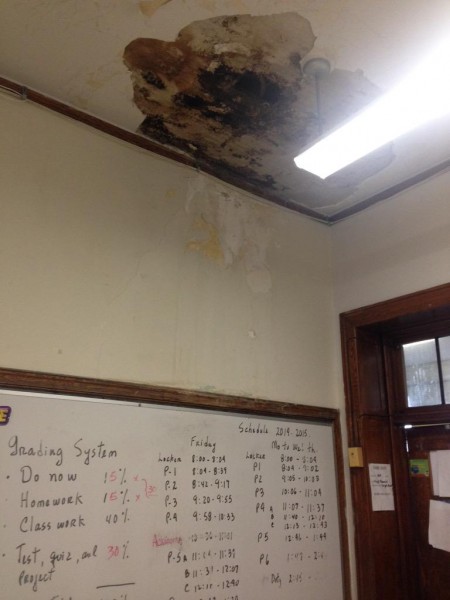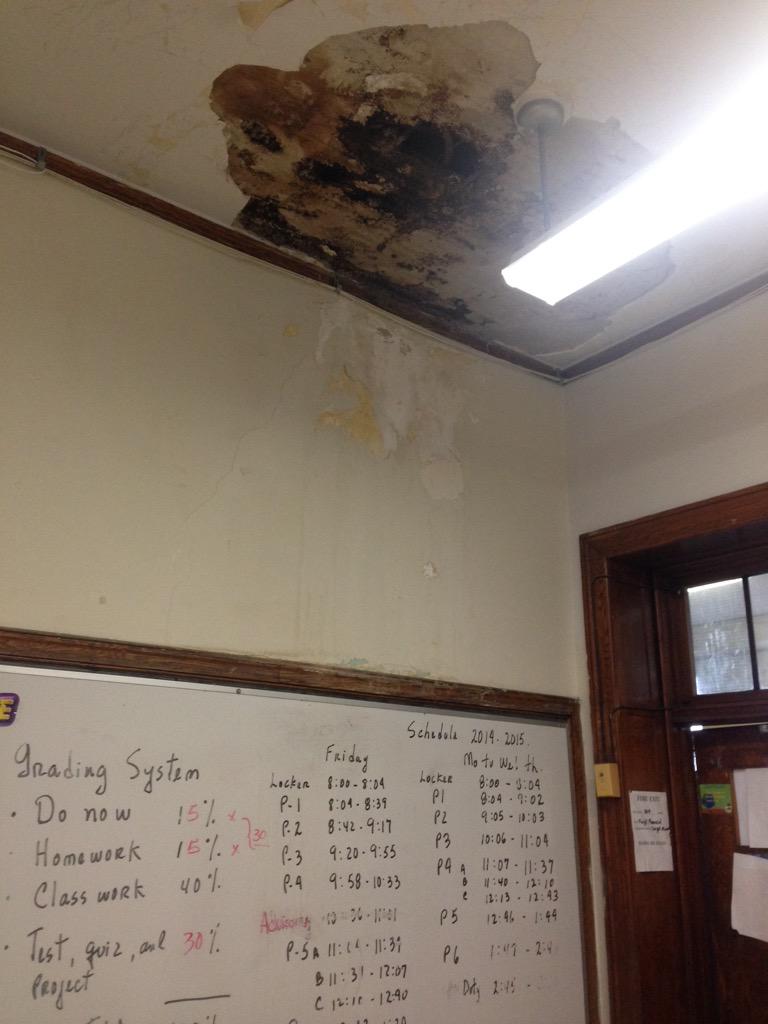“I’ve been scared and battered,
My hopes the wind done scattered.”
– Langston Hughes, ‘I’m still here’

Too many Rhode Island children and teachers, particularly in low-income communities, work in schools that are decrepit.
Governor Raimondo recognizes the need to invest in our schools. In fact, she’s proposed $20 million to do so. A very important step and yet insignificant compared to other state and city infrastructure investments – the $22 million East Bay bike path renovations, the $43 million proposed Garrahy Parking Garage, and the $40 million 2012 road bond in the City of Providence.
Nevertheless, Raimondo’s plan is based – too loosely, I would say – on the Massachusetts School Building Authority.
“The bottom line is that the MSBA [Massachusetts School Building Authority] funding activity not only leaves the Commonwealth with better schools for our children, but continues to play a not insignificant role in boosting the economy of the state, providing jobs for thousands and thousands of our workers,” says the 2o14 report: The Economic Impact of MSBA Investments on the Massachusetts Economy.
Prior to the creation of the MSBA in 2004, the Bay State likewise had a complicated history with adequate supports for school buildings.
Clayton-Matthews and Bluestone note, “By the early 2000’s, the ‘temporary’ (Massachusetts school building assistance) program had become unsustainable, accumulating more than $11 billion in unfunded promises to local districts. By 2003, there were 428 projects on a waiting list to begin construction, and communities that actually broke ground, routinely waited years – sometimes decades – to receive their first reimbursement payment from the state.”
Our current predicament sounds similar. Over at WPRI, Dan McGowan reveals Rhode Island has “$600 million in [school] facility maintenance deferred since 2011.”
According to Clayton-Matthew and Bluestone, here’s the low down on the Massachusetts School Building Authority:
“Since 2004, the MSBA has made over $10.5 billion in payments to cities, towns and regional school districts, including full or partial payments to all of the eligible Waiting List Projects. In addition, the MSBA has completed 784 of the 788 backlogged audits inherited from the former program, saving the taxpayers of Massachusetts more than $1 billion in project costs and $2.9 million in local interest costs.
The MSBA’s grant program places tremendous emphasis on planning, due diligence and prioritization of scarce MSBA resources. The MSBA approves new projects through a competitive process that stresses need and urgency, and reimbursement can range from 31 to 80 percent of eligible project costs.
There are currently more than 300 construction, renovation and repair projects in the MSBA’s Capital Pipeline. The MSBA, which has a designated revenue stream of one penny of the state sales tax, collaborates with municipalities to invest approximately $500 million per year in schools across the Commonwealth.”
By contrast, Governor Raimondo’s proposed $20 million cannot simultaneously restore Mt Pleasant High School, bring modern science labs and a renovated auditorium to Gilbert Stuart Middle School, fix the pipes at Roger Williams Middle School – let alone spruce up additional schools in Pawtucket and North Kingston.
Discussion is in the air. Cumberland Senator Ryan Pearson has a bill more like Massachusetts’ successful system than Raimondo’s proposal. Providence Representative Aaron Regunburg wrote to his constituents, “while this is just a start and is not enough to solve our school infrastructure needs – I will do everything in my power to ensure that the final budget includes at least this level of additional funds.”
More delayed maintenance in Rhode Island won’t make future rehabs any cheaper or allow Rhode Islanders to benefit from the Massachusetts model of economic investment through school rebuilding and construction.
Unless Governor Raimondo’s plan is to let several thousand more children over the next few years learn in decaying structures, it’s time to start talking to leaders in Massachusetts. Rhody can learn their game plan – and then do it better!

